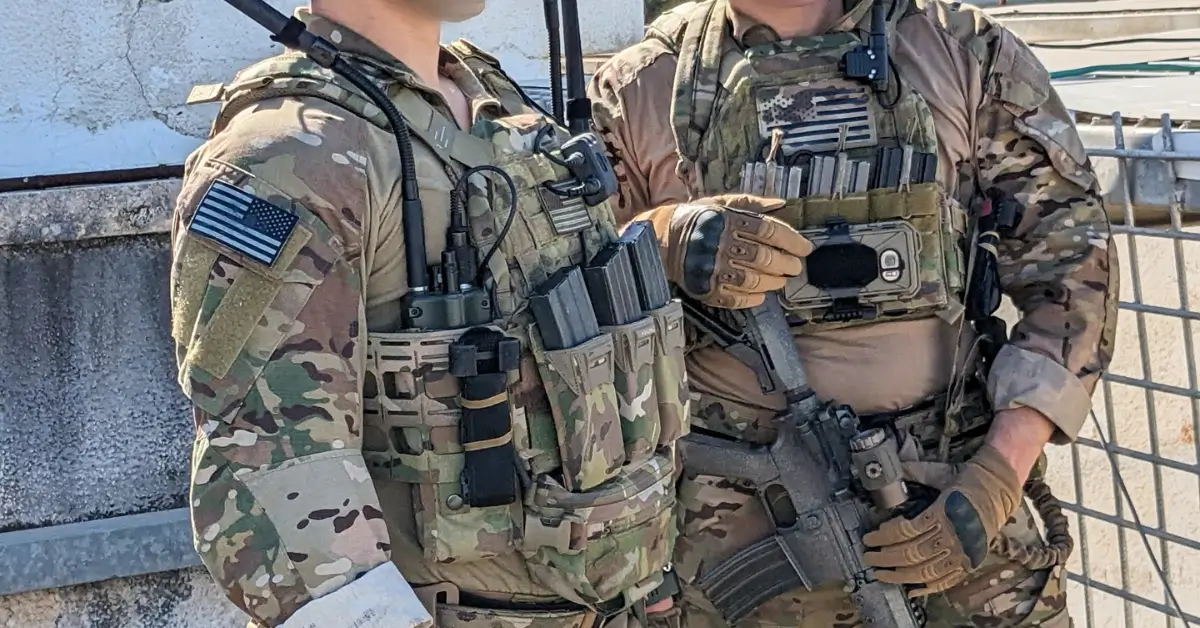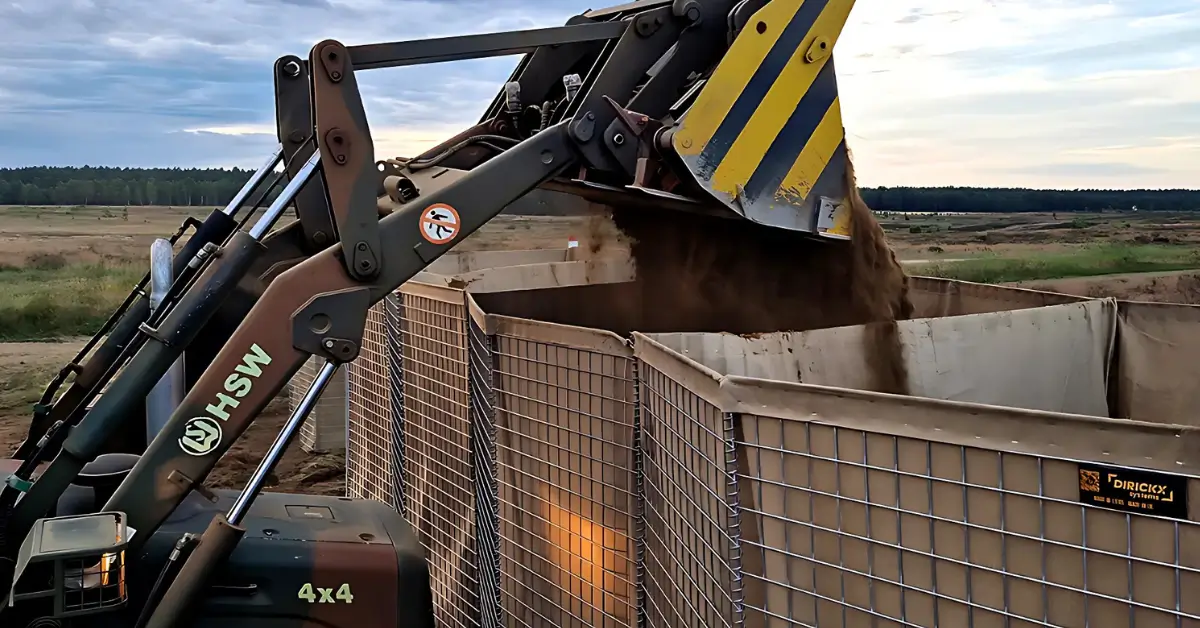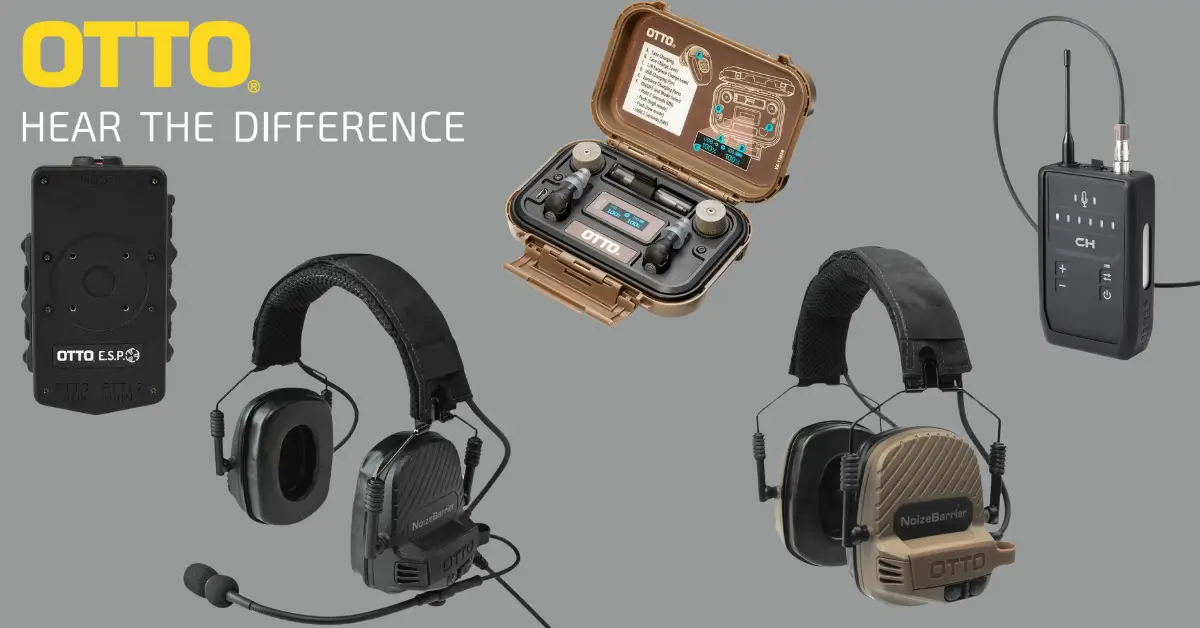The plate carrier is an essential piece of equipment when preparing for duty, whether in the military or law enforcement. This often misunderstood item is specifically designed to hold armour plates. Without these plates, a plate carrier is just a vest and does not provide any protection against higher-calibre threats. Choosing the right plate carrier and plates for your operational needs is crucial to staying agile, protected, and mission-ready. Here’s an essential guide to help you make the right choice.
What is a Plate Carrier?
A plate carrier is a tactical vest designed to hold ballistic armour plates in the front, back, and sometimes on the sides, depending on the specific design. The primary purpose of this vest is to provide ballistic protection. However, it differs from a bulletproof vest in that it is designed to be up-armoured for various threats by inserting additional plates. This modular aspect allows users to adjust their level of protection according to the specific mission requirements.
Armour Plates and Threat Level Considerations
As explained above, a plate carrier and choosing the proper plates are inseparable. Any plate carrier’s functionality largely depends on the armour plates it holds. Understanding the different levels of protection offered by these plates is essential to ensuring your gear meets the demands of your operational environment. Here’s a breakdown of the National Institute of Justice (NIJ) armour levels to help you select the appropriate plates for your plate carrier:
Level IIA: Stops lower velocity handgun rounds such as 9mm and .40 S&W, used typically by undercover law enforcement for covert protection.
Level II: Can stop 9mm and .357 Magnum rounds, suitable for urban law enforcement.
Level IIIA: Protects against .357 SIG and .44 Magnum rounds, a common choice for general law enforcement protection.
Level III: Designed for high-powered rifle rounds such as those from an AK-47, suitable for combat situations.
Level IV: Offers the highest protection against armour-piercing rounds, essential in high-threat environments.
Choosing the Right Plate Carrier
1. Mobility vs. Protection:
The trade-off between protection and mobility is crucial when selecting a plate carrier. Generally, the higher the level of protection a plate offers, the heavier it will be. This increase in weight can impact your mobility and reduce your endurance over long periods or across extensive movements. It is essential to assess your operational requirements meticulously. In many roles, particularly those involving rapid movement or prolonged deployment, the ability to move quickly and sustain endurance is as vital as the ability to stop a high-calibre round. Choose a balance that keeps your ability to perform effectively in your environment.
2. Fit and Comfort:
Ensure the plate carrier fits well; it should cover your vital organs while allowing for freedom of movement. It should be adjustable at the shoulders and waist to accommodate different body sizes and the varying thickness of undergarments or duty wear.
3. Load Carrying Capabilities:
If your mission requires carrying additional gear, look for a plate carrier with modular webbing, such as MOLLE (Modular Lightweight Load-carrying Equipment). This allows for the attachment of pouches and accessories, essential for missions requiring extensive equipment.
4. Material and Durability:
The plate carrier’s material should be robust enough to withstand the environments you will face. Nylon is a popular choice due to its durability and resistance to abrasion. Additionally, check the quality of stitching, zippers, and buckles, as these areas can often be the first to fail.
5. Quick Release Systems:
Consider using a plate carrier equipped with a quick-release system for situations where you might need to remove your gear quickly. This is especially important in medical emergencies or when transitioning to less protective gear is necessary swiftly.
Training and Familiarity
No matter the quality of your plate carrier, proficiency with it is key. Regularly train while wearing your gear in realistic scenarios. This will ensure you are comfortable and agile, making it a natural extension of your tactical capability rather than a cumbersome addition.
Selecting the right plate carrier and plates is critical for those in the line of duty. Understanding the specific requirements of your mission, the balance between protection and mobility, and the features of the carrier itself will guide you to the best choice.
Ready to Upgrade?
You can contact an MSS Defence expert today if you need advice and solutions for your plate carrier and armoured plate requirements. Our specialists will provide personalised advice and tailored solutions to enhance your mission readiness and operational effectiveness. With our help, you can equip yourself with the necessary knowledge and gear to remain formidable in any challenge.



